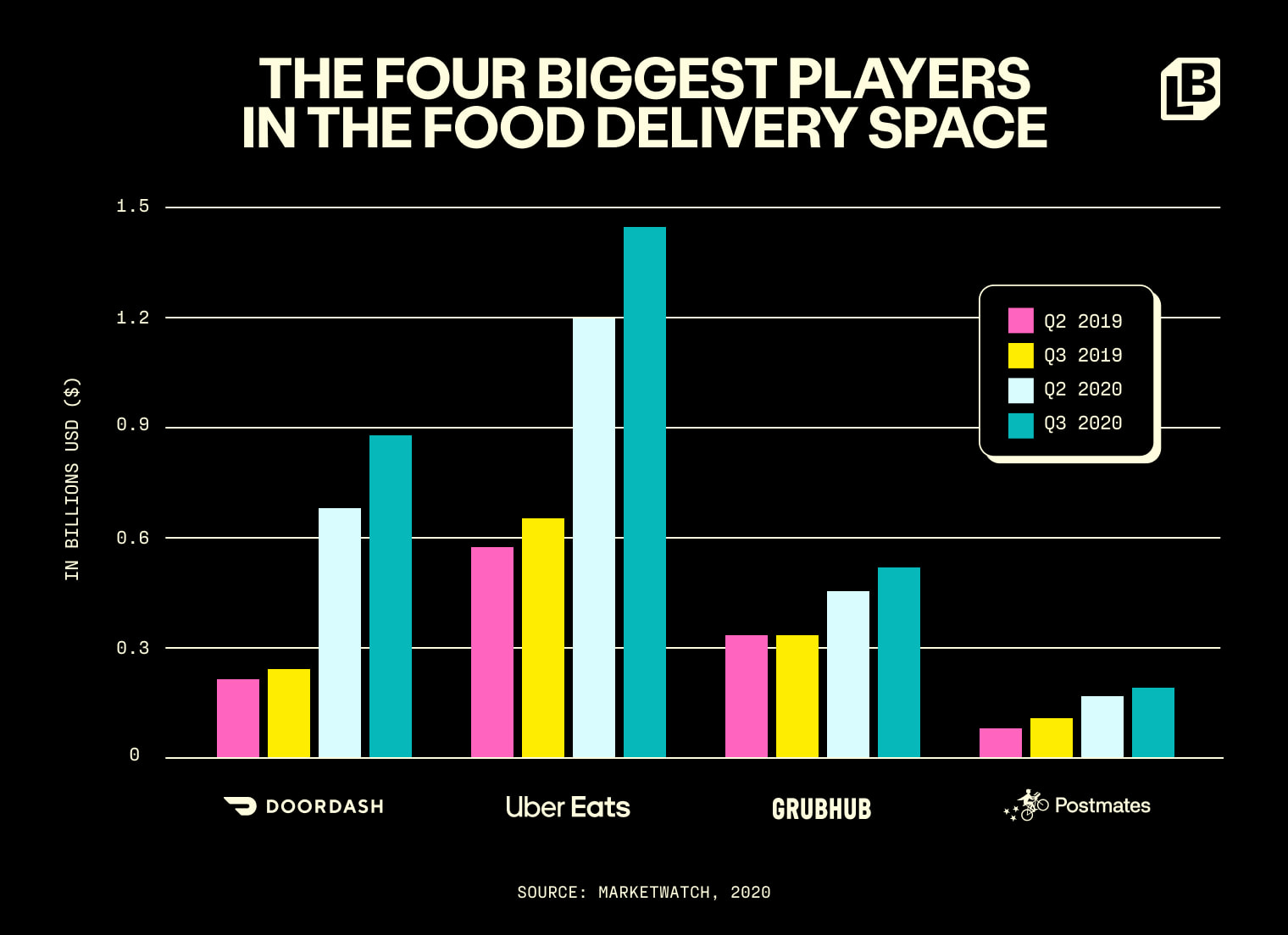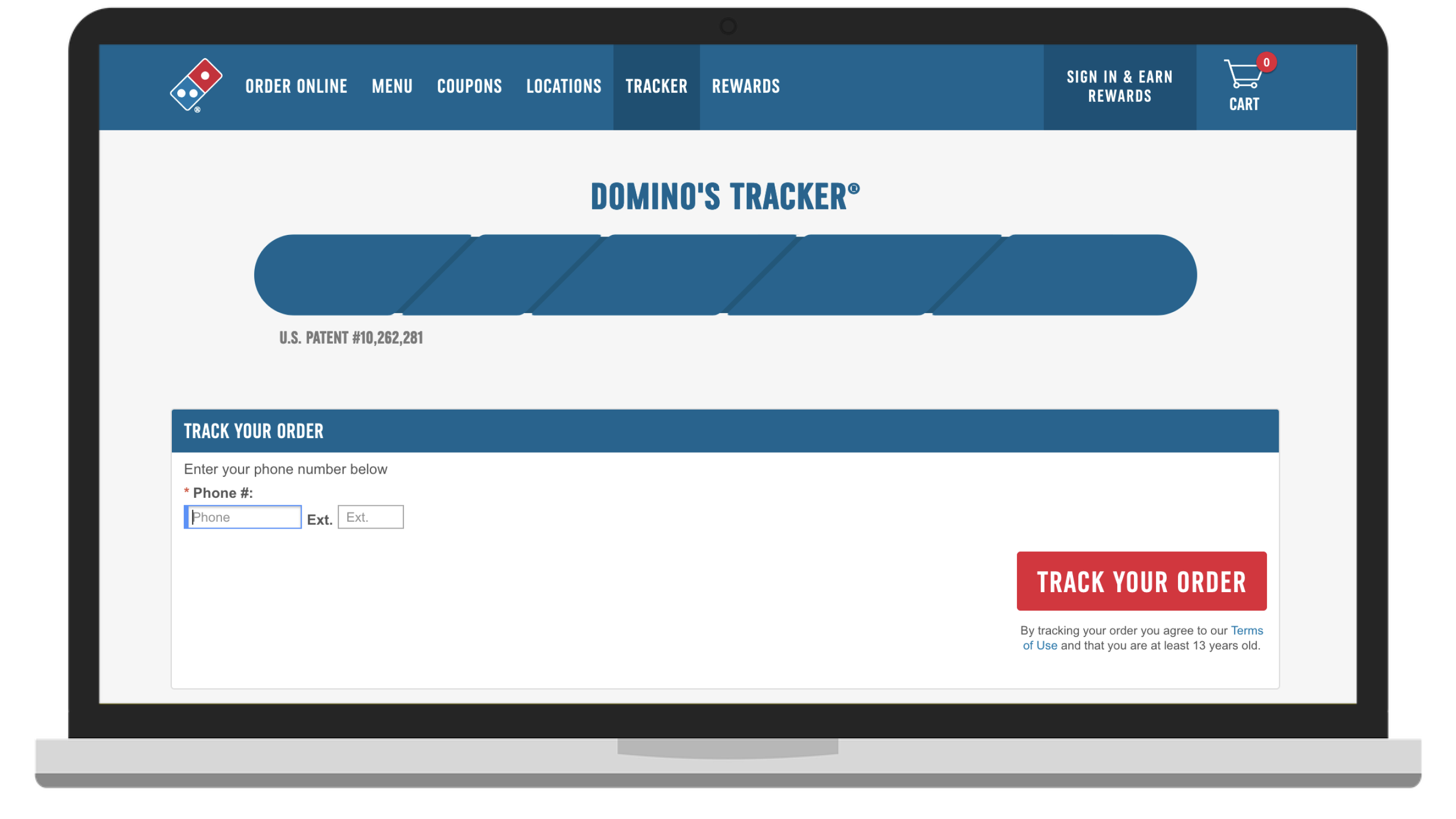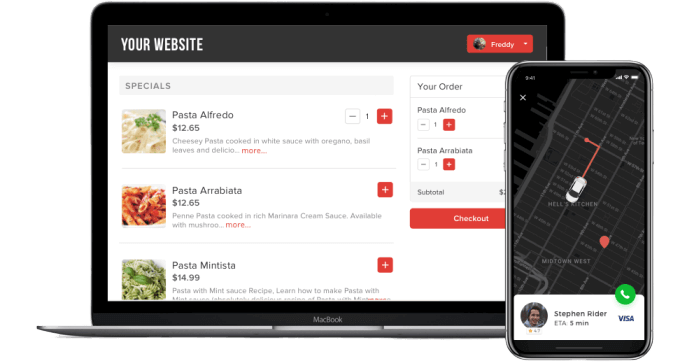SEE HOW LUNCHBOX CAN HELP WITH YOUR FOOD DELIVERY SOFTWARE:
Share
- Jump to:
The digitization of our modern society has seeped into the restaurant sector, where ordering food online, using delivery apps, and applying contactless technology is now the new normal. In fact, since 2017, the global revenue for online food delivery has doubled. Currently, the market is worth $150 billion, and expected to reach $300 billion by 2022.
Although food delivery had been steadily growing over the past few years prior to the pandemic, the demand for this service saw a massive spike in 2020 and 2021. The Coronavirus pandemic was responsible for accelerating trends in the restaurant and foodservice industry, and this is especially true for food delivery.

The four biggest players in the food delivery space collectively saw a $3 billion rise in revenue in the third and fourth quarters of 2020. Source: MarketWatch, 2020
In order for restaurants to keep up with this high demand, businesses had to adopt food delivery software. This technology allows foodservice establishments to provide delivery to customers and dispatch these orders to customers. Ideally, food delivery software should be able to be integrated with a restaurant’s existing point-of-sale software. Other key features of this software might include real-time data, inventory management, route planning, credit card transactions, the ability to access reports, menu management, and tableside ordering.
The whole point of ordering food for takeout and delivery is for customers to receive it in a timely and convenient manner. Therefore, the software being used to fulfill these orders should be up-to-date, efficient, and automated.
Why is Food Delivery Software Important?
With the continued growth and popularity of food delivery, the right software is more important than ever. Approximately 60 percent of customers reported that they order food for takeout or delivery at least once a week.

The demand for food delivery is still strong, and restaurant business owners and operators know that being set up with a delivery platform can be key to increasing profits. According to Restaurant Business, 60 percent of restaurant operators reported that offering delivery has boosted incremental sales.
This technology is especially crucial for cloud kitchens that offer only delivery or takeout. With this food delivery business model, every minute spent making the food, packaging it, and handing it off to the delivery driver is an important part of CRM (customer relationship management). The faster the food gets to the customer, and the more consistent the dish is, the better.
Whether your restaurant business is a cloud kitchen or full-service establishment, food delivery software is a requirement for exemplary delivery service.
Key Features and Integration Capabilities for Food Delivery Software
There are many different food delivery software options, and some will be a better fit than others for your restaurant. Prior to deciding on one, know exactly what features you need, as well what you don’t need to ensure you are not overpaying for the unnecessary.
Be aware of all of your restaurant’s existing systems and software to ensure that the food delivery software you choose can be seamlessly integrated into what you already have.
1. Online ordering and menu integrations.
The primary purpose of food delivery software is to be able to complete online orders with ease. It should be simple to integrate your existing menu with the software you choose. Your online menu should also be able to be updated as needed when menu items change, run out, or when specials are added.
2. On-Demand Food Ordering App Push Notifications.
Android and iOS users likely have multiple mobile apps for food delivery, all of which send out push notifications. These push notifications can alert customers on when their order is received, when it is complete and ready for pick up, or when it is on its way to being delivered. Additionally, notifications can be used as a form of direct marketing to the customer by sending out special deals and discounts. This feature can be helpful for developing rapport with the customer, and consistent communication like this can improve the overall customer experience.
3. Kitchen management.
If you run a tight BOH (back-of-house) ship, chances are your foodservice operation has an up-to-date kitchen management platform, like Lunchbox, for example. While searching for the right food delivery software, be sure that it has the ability to sync up with your existing kitchen management software.
4. Point of sale (POS).
All restaurants have some type of POS system (point-of-sale) and in this day and age, it is likely that your restaurant has a digital system from a company like Toast or Square. Before deciding on delivery management software, check to make sure integration between these two systems is viable.
5. Delivery routing.
Route optimization ensures that your restaurant delivery orders are arriving as quickly and efficiently as possible. Real-time driver tracking allows restaurant owners and operators to better understand the delivery process from start to finish. You want your restaurant’s food to get from point A to point B as quickly as possible, and a straightforward route ensures this. Restaurant delivery software should automate the route optimization process.
6. Delivery zone management.
It doesn’t always make sense to deliver all over town, especially if the quality of your food degrades quickly. Customers want their food to be warm and fresh upon delivery. Food that has been sitting for an hour after being made is not in its prime, and this will negatively affect your restaurant’s reputation and the customer’s experience. When you are setting your restaurant up to commence delivery operations, zone management is a feature that can ensure that your food doesn’t travel too far.

Domino’s Tracker allows customers to see at what step their order is at in real-time. Source: Domino’s, 2022
7. Food delivery GPS tracking in real-time.
Customers want their delivery food fast, and knowing where exactly their food is and when it's going to get to their doorstep can improve the customer experience. A real-time GPS that provides order tracking is a feature offered by certain platforms and delivery apps. Delivery tracking can also provide proof of delivery, which may be necessary in situations where orders are reported as lost or late.
9. Reporting.
Being able to access reports with your food delivery software can be helpful for a multitude of reasons. Data gathered on the delivery process can show average delivery times, lost or delayed orders, average order cost, customer ordering history, and more. Analyzing these metrics can assist operators in seeing where there is room for improvement. Note: not all software will offer reporting features, or the ability to report on all of these metrics.
How to Choose a Food Delivery Management Solution
With so many food delivery software options vying for your attention, you’ll need to know what exactly you’re looking for. Here are four key components to consider:
1. Ability to customize.
No two restaurant businesses are the same, and therefore, each will have different needs when it comes to food delivery software. The ability to customize the software you choose will allow you to get what you need for your specific business needs. Additionally, the ability to integrate your selected software into your current systems will allow you to become delivery-ready, quickly and efficiently. Most restaurants operate on a tight budget, and it doesn't make sense to spend money on features you don’t need, or on a system that doesn’t have every feature you need.
2. Ease of integration.
Food delivery software should help automate the delivery process and bring more efficiency to your restaurant business. Therefore, integration of your selected software into your existing systems should not be a hassle. Confirm with customer support prior to purchasing that the integration process is user-friendly and painless.
3. Costs.
With tight profit margins and even tighter budgets, restaurants can only make purchases that will improve upon their business. Cost may be the deciding factor in what food delivery software you choose, so compare the price amongst different software choices. Take note of monthly fees, initial costs, and any delivery fees associated with the software.
4. Customer support.
No matter how great your food delivery software is, chances are you’ll need the support of the company’s customer service at some point. Hopefully, you won’t have to frequently be in contact with the company’s customer support, but when the time comes, you’ll want them to be available when needed with the right answers. Prior to purchasing the software, asking the customer service team questions is a great way to gauge their level of helpfulness and attentiveness.
7 Best Food Delivery Software for Restaurants
Food delivery software is not a one-size-fits-all solution. With such a wide variety of restaurant and foodservice business models, there is not a delivery system that is necessarily the single, best option. Each delivery solution offers different features and levels of customization, and some will be a better fit for certain restaurant businesses than others.
Food delivery services like DoorDash, Uber, and Grubhub may be the most popular options for food delivery apps, but this doesn’t mean these are the best choice for your restaurant. These platforms have a massive reach, can help increase takeout and delivery orders, and draw new customers to your business
Even though mainstream restaurant delivery service software offers many benefits, it is worth researching alternative software options. Some companies even offer free trials to help you determine if their restaurant delivery software is the best fit for your business.
Although this is not a full list of every food delivery software that exists, here are seven of the best options on the market:
Lunchbox.
Lunchbox is a modern ordering system and cloud-based food delivery solution for restaurants to grow their online revenue. Made for restaurants of all sizes, businesses can streamline processes related to marketing, online ordering, and dispatching. With Lunchbox, you can integrate everything you use to operate your restaurant in one system, and easily manage incoming food orders from multiple channels.
Tookan.
Tookan, by Jungleworks, is an online food ordering website and app that also provides a complete delivery management technology suite. Other key features include real-time delivery tracking, marketing campaigns, and a smart dashboard to manage all orders in a single place. With Tookan’s software solution, orders can be deleted, canceled, and re-assigned in a single click.

Tookan offers a branded online website for food ordering and an app with real-time tracking. Source: Tookan, 2022
OnTime 360.
OnTime360 is an online food delivery software solution that offers features such as a customer web portal, driver tracking, and advanced route scheduling. In addition to a flexible pricing structure, OnTime360 provides a plethora of features. Customer support is available for the delivery software in nearly 300 countries.
GetSwift.
GetSwift’s delivery management software is used throughout 75 different industries and by companies across six continents. With this software solution, food orders can be integrated directly from a restaurant’s POS system and then automatically dispatched to delivery drivers. Operators can view a driver’s location and be comforted knowing that the software provides route optimization. GetSwift offers a free, month-long trial, easy set-up, and only charges per delivery. Customers can provide instant feedback on the service, and operators can access analytics on delivery operations.
DeliverLogic.
Used by over 200 delivery operators and 45,000 restaurants worldwide, DeliverLogic helps restaurants boost profits by maximizing last-mile delivery efficiencies. The delivery platform boasts an average delivery time of 26 minutes and an average delivery fee of $4.29. DeliverLogic offers online ordering, marketing features, customer support, delivery services, and a free trial of its service.
GloriaFood.
GloriaFood, a software created by Oracle, is a free online ordering system that enables restaurants to take online orders, coordinate food delivery, and offer tableside ordering. In addition to these primary features, this software allows users to update menus and pricing, launch marketing campaigns, and view sales reports. According to GloriaFood, a free account can be set up in a matter of minutes, and online orders can be taken in the same day.
Customers want food delivery options more than ever
The demand for food delivery has been steadily increasing over the past few years, but the COVID-19 pandemic greatly accelerated this sector. In order to keep up, restaurants and food service operations needed to offer delivery options to stay afloat and maintain a competitive edge. Now, with no sign of the demand for food delivery and takeout slowing down, online food delivery software, such as Spread, Tookan, and GetSwift, are a necessity to streamline order management. This type of software solution brings a high level of functionality to the entire order management process, increasing profits, efficiency, and customer satisfaction.